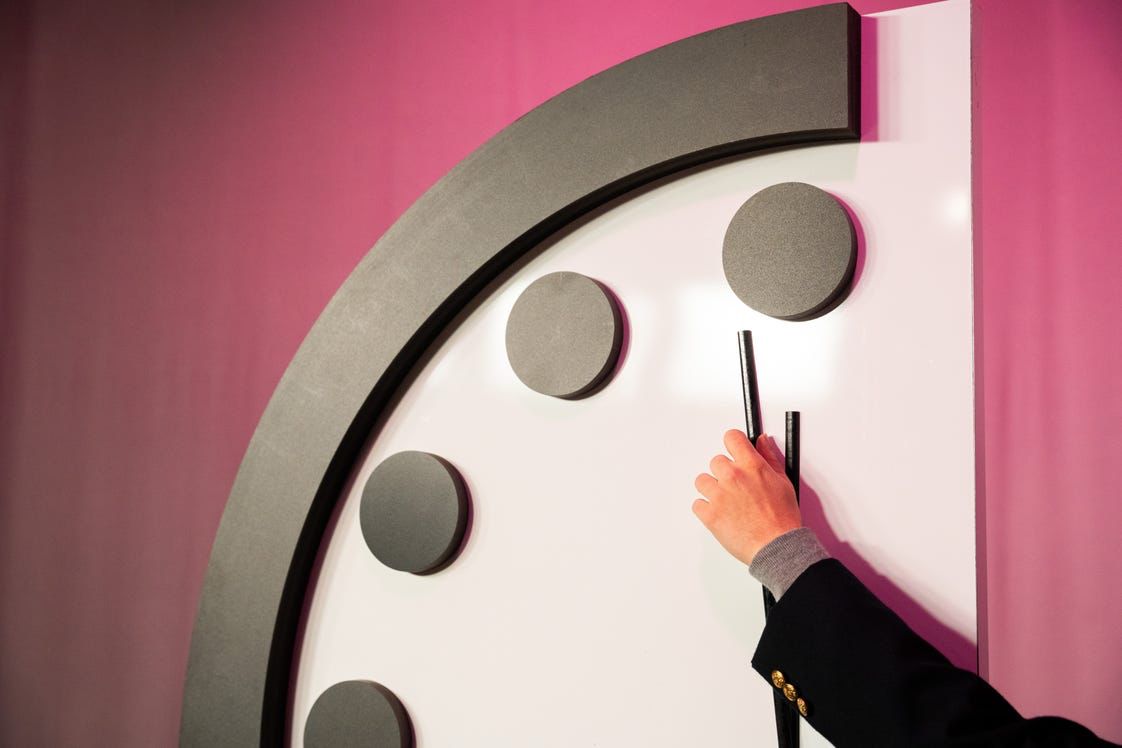
Each year for the past 78 years, the Bulletin of the Atomic Scientists has published a new Doomsday Clock, suggesting just how close – or far – humanity is to destroying itself.
The next edition of the Clock will be revealed Tuesday, Jan. 28 at 10 a.m. EST on a live webcast. It will be a closely held secret until then.
The clock is meant as a metaphor for how close humanity is to self-annihilation, according to the Bulletin of the Atomic Scientists, which has maintained it since 1947. The group was founded two years earlier by University of Chicago scientists who had helped develop the first nuclear weapons for the Manhattan Project.
Historically, the ominous clock measured the danger of nuclear disaster. In the past two decades three other areas of concern have been added: climate change, artificial Intelligence and mis- and disinformation.
Each year, the members of the Science and Security Board are asked two questions:
Is humanity safer or at greater risk this year than last year?
Is humanity safer or at greater risk compared to the 78 years the clock has been set?
Their answers set the clock for the coming year.
How did the Doomsday Clock start?
In 1945, on the anniversary of the bombing of Pearl Harbor, scientists who had worked on the Manhattan Project, which built the world’s first atomic bombs, began publishing a mimeographed newsletter called The Bulletin of the Atomic Scientists.
Two years later, as those same scientists contemplated a world in which two atomic weapons had been used in Japan, they gathered to discuss the threat to humanity posed by nuclear war.
“They were worried the public wasn’t really aware of how close we were to the end of life as we knew it,” said Rachel Bronson, current president and CEO of the Bulletin.
Martyl Langsdorf, an artist and wife of Manhattan Project physicist Alexander Langsdorf Jr., came up with the idea of a clock showing just how close things were.
It was called the Doomsday Clock.
“It gave the sense that if we did nothing, it would tick on toward midnight and we could experience the apocalypse,” Bronson said.
Where does the Doomsday Clock stand now?
In 2024, the experts who maintain the Doomsday Clock said humanity was as close as ever to global catastrophe. The time on the symbolic clock was set at 90 seconds to midnight, the same as in 2023.
Prior to that it had stood at 100 seconds to midnight, closer to destruction than at any point since it was created in 1947.
Who decides where the Doomsday Clock is set?
The Doomsday Clock is set each year by the members of the Bulletin’s Science and Security Board in consultation with its Board of Sponsors, which includes nine Nobel laureates. This year’s board included 18 members.







